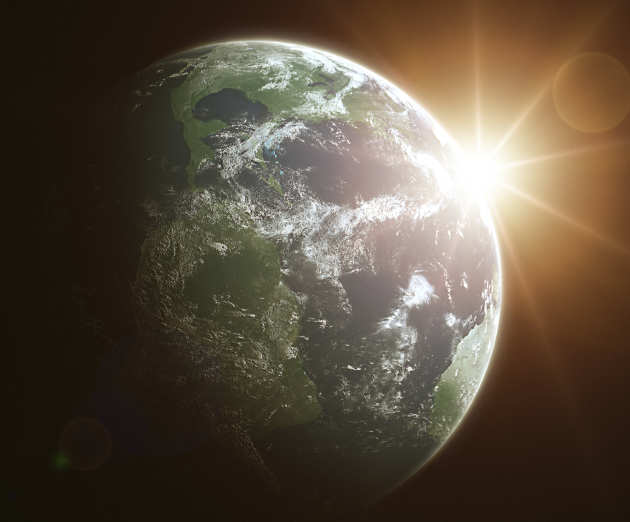Topics: Earth systems science
Type: Grantham notes
Publication date: September 2013
Download
Summary
 Authors: Dr Simon Buckle and Dr Flora Whitmarsh
Authors: Dr Simon Buckle and Dr Flora Whitmarsh
Overview
- Human emissions of greenhouse gases (GHGs) and aerosols create an energy imbalance at the top of the atmosphere. GHGs cause warming by trapping infrared radiation from the Earth’s surface; aerosols have a cooling effect by reflecting incoming sunlight back into space. There are other important influences also such as the impact of aerosols on clouds, the effects of black carbon (soot) and airplane condensation trails.
- The size of this energy imbalance is measured by the radiative forcing, which for long lived greenhouse gases in 2011 was 2.83 [2.54 to 3.12] W per m2. This is an increase of 0.20 [0.18 to 0.22] since the IPCC’s last assessment report in 2007 (AR4). There is high confidence that anthropogenic aerosols have offset a high proportion of the greenhouse gas forcing.
- Carbon dioxide has been the dominant contributor of the long-lived GHGs, with a radiative forcing of 1.82 [1.63 to 2.01] W per m2, an increase of about 0.3 W per m2 per decade over the past 15 years. Carbon dioxide stays in the atmosphere for a long period of time so cumulative emissions are particularly important to its impact on the climate.
- The contribution of methane to the radiative forcing is now 0.48 [0.43 to 0.53] W per m2, an increase of 2% since AR4. Nitrous oxide concentration has increased by 6% since AR4 and now contributes a radiative forcing of 0.17 [0.15 to 0.19] W per m2. The radiative forcing from all halocarbons (including CFCs and HFCs) is 0.36 W m2 ; there has been a reduction in the radiative forcing from CFCs but an increase in the contribution of their replacements.
- The (negative) effective radiative forcing due to anthropogenic aerosols is −0.9 [−1.9 to −0.1] W per m2. This is consistent with multiple lines of evidence suggesting less negative estimates for aerosol-cloud interactions than those discussed in AR4.
- The Representative Concentration Pathways (RCPs) in the IPCC’s Fifth Assessment Report (AR5) cover a range of possible future emissions trajectories. RCP2.6 is a strong mitigation scenario while RCP8.5 is an emissions intensive one, with carbon dioxide levels of 933 ppm by 2100. These scenarios are not predictions; the actual emissions path we follow in the 21st Century will depend on the extent to which there is effective national and international mitigation action. Current CO2 emissions appear to be in line with those in RCP8.5.
- AR5 says that limiting climate change will require “substantial and sustained” reductions of greenhouse gas emissions.
View publications by:
Topic
Climate Science
Earth and Life Sciences
Energy and Low-Carbon Futures
Resources and Pollution
Economics and Finance
Health
View all publications and browse by year
Publication type
Briefing papers and Briefing notes
Grantham Institute Outlooks
Evidence & submission papers
Infographics